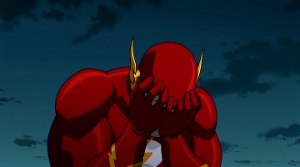
by General Zod
Arthouse (n) [art’howss]: (1) a film playing in cheap, rundown theaters inside the urban cores of major cities; often foreign or made independently of the Hollywood Studio financing System. May be retroactively applied to films made within the Hollywood Studio System, and film-making techniques used by those in the System’s employ, that the speaker particularly likes, but never as a pejorative. For the pejorative usage, see definition (2)
(2) A pejorative term for boring films made by even more boring film school graduates steeped in arcane theory and purposefully obtuse jargon-speak, because sounding smart is much easier than being smart. And if people were smart, we wouldn’t need terms like “arthouse.” See definition (3)
(3) A branding label for a lifestyle demographic that (like all demographics) is the largely-imaginary composite construct of marketing executives at distant advertising companies who don’t give a fuck about you, or any of the Actually Important Questions. Like, “What is art? What, therefore, is ‘arthouse’?” Who cares? There’s money to be made off the poor suckers and rich fools who think the source of their movies matters more than the movies themselves. (“People like that exist?” Yes, unfortunately, and here’s the real ass-kicker: there are more of them than there are of you.)
Continue reading Jor-El Was Right #1: On the False Dichotomy of “Arthouse” & “Mainstream” Cinema


